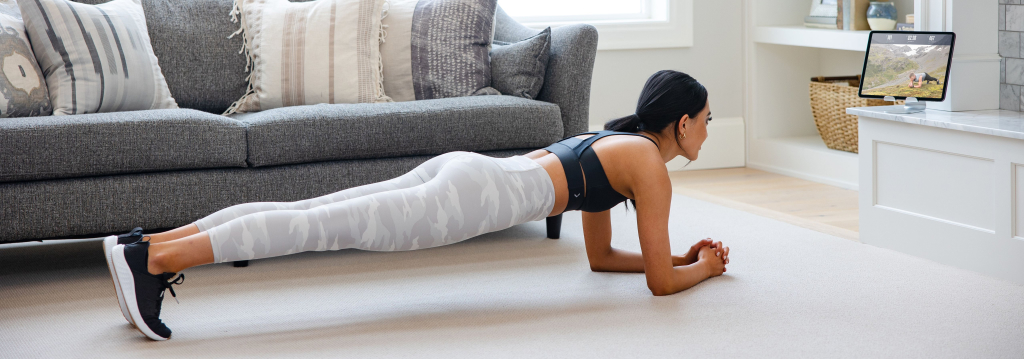
If you’ve ever wondered, can you really do Pilates at home?
Is Pilates at home effective?
Can you lose weight doing Pilates at home?
Then this article is for you.
We’re answering those questions and covering everything you need to know about Pilates, including how it started, what the health benefits of Pilates are, and whether you can effectively do it at home.
We’re also answering the top Pilates at-home questions and diving into the research to see what the science says.
If you’re short on time, here are some key takeaways:
- Founded by Joseph Pilates, the Pilates method focuses on eight principles: breathing, range of motion, precision, stability, flow of movement, centering, control, and opposition.
- Pilates’ health benefits include improved balance and lower limb strength, decreased lower back pain, increased flexibility, and better posture.
- You can do Pilates at home and still get a great workout. We’ll show you how in this article.
Read on to learn everything you need to know about Pilates, the research behind it, and how to create an effective home Pilates practice.
- What is Pilates? A Quick Breakdown
- What Does Pilates Focus On?
- How is Pilates Practiced?
- The Top 4 Health Benefits of Pilates
- Can You Lose Weight Do#ing Pilates at Home?
- How Long Does It Take to See Results from Doing Pilates at Home?
- Is Pilates Effective at Home?
- Is 20 Minutes of Pilates a Day Enough?
- 3 Reasons to Practice Pilates at Home
- How to Practice Pilates at Home
What is Pilates? A Quick Breakdown
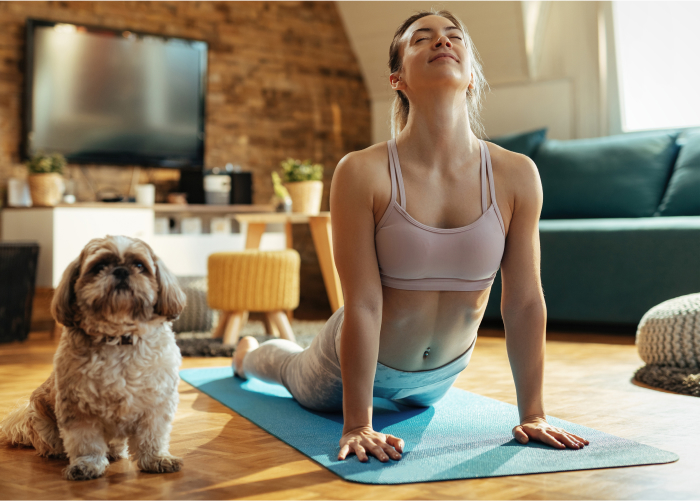
Is Pilates just another form of yoga?
At its core, Pilates is a low-impact form of strength training.
It focuses on core strength, proper alignment, and controlled movements to build a balanced and functional body.
Founder Joseph Pilates suffered from asthma and rickets as a child.
According to research, this made him frail and weak, and, to mitigate this, he wanted to create an exercise regimen that he could use to get stronger. [1]
Joseph Pilates went on to study martial arts, Greek and Roman exercises, yoga, and Zen meditation to understand the body and, more importantly, proper movement. [1]
He then went on to work as an orderly, where he worked with patients in their hospital beds using the techniques he discovered to improve their limb strength. [1]
Interestingly, his methods worked and helped patients recover more quickly than if they did no rehabilitation at all. [1]
This experience is where Joseph Pilates formed the early foundations of Pilates.
What Does Pilates Focus On?
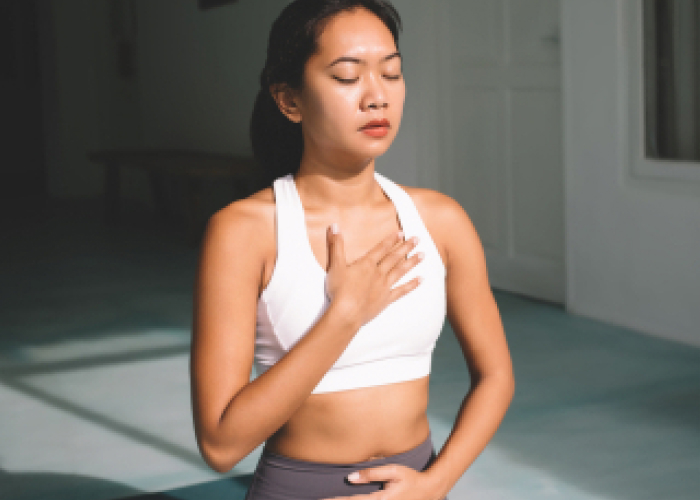
Joseph Pilates created his eight principles of Pilates, which included the following, according to research presented in Frontiers [2]:
- Breathing
- Range of motion
- Precision
- Stability
- Flow of movements
- Centering
- Control
- Opposition
His methodology also focuses on maintaining and stabilizing cervical and core alignment and focused, controlled movements that effectively engage muscles while also protecting the spine. [1]
Because of that, the Pilates method we know today is an effective strength training and rehabilitation tool.
How is Pilates Practiced?
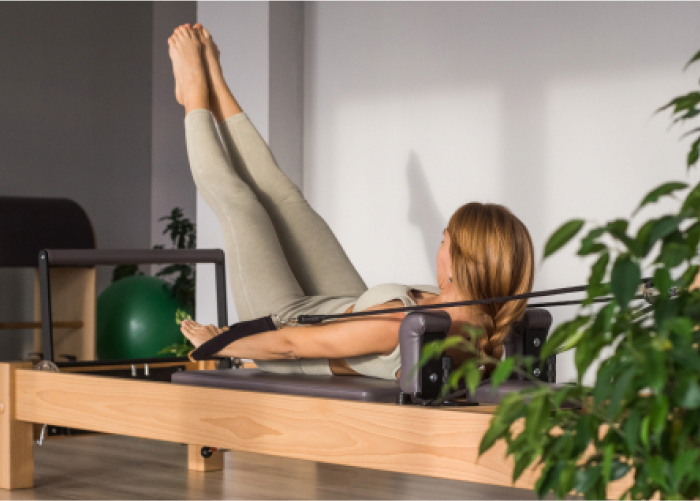
In traditional Pilates studios, you’ll find Reformers, a large bed-like contraption. The reformer has straps attached to it and a sliding platform that sits on top and rolls back and forth.
Using different springs, the straps offer different levels of tension and resistance to change how the workout is performed.
Users can lie down, sit, stand, and kneel on the top part of the platform to engage in different exercises.
Pilates can also be done on a mat using your body weight as the resistance, along with some tools such as straps, rings, sliding disks, and more.
Whether you’re on a Reformer or mat, there are roughly 50 exercises in the Pilates method, and trainers generally choose a handful to cycle through in each session. [1]
People who practice Pilates usually perform each move about three to five times in a slow, rhythmic movement where focus and precision are key.1
The next question becomes, does Pilates work? And, if so, what are the health benefits of Pilates?
The Top 4 Health Benefits of Pilates
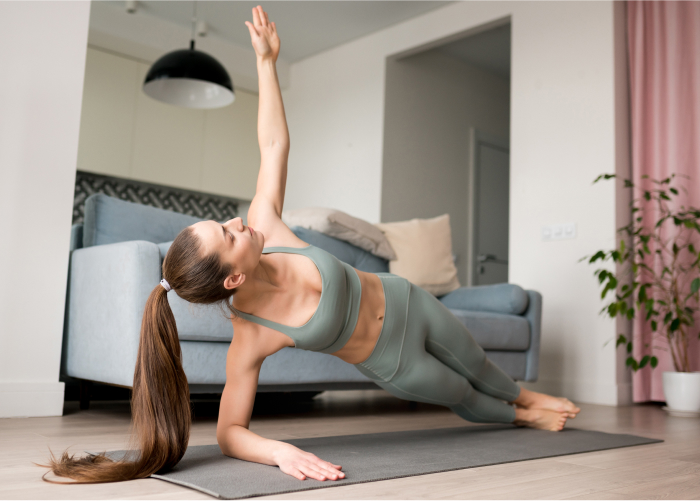
Despite its long history, studies on Pilates are lacking.
While plenty of studies are out there, they are generally from a small sample size.
With that said, here’s what the research shows so far and what the health benefits of Pilates are:
1. Improved Balance and Lower Limb Strength
In a meta-analysis of five studies that looked at how Pilates performed on a mat in study participants who were at least 60 years old, researchers found that it improved their [3]:
- Muscle strength
- Dynamic balance
- Cardiorespiratory fitness
- Flexibility
Researchers also noted that it strengthened their legs while improving their lower back and hip flexibility. However, they also mentioned that more high-quality studies are needed to confirm these positive findings. [3]
Another meta-analysis looked at ten studies, with study participants ranging in age from 60 to 80 years old, and discovered that Pilates had the power to improve [4]:
- Muscle strength
- Gait performance
- Balance
- Reduced falls
- Moods
- Quality of life
Both reviews show Pilates packs a powerful punch to improving lower limb strength and balance. However, once again, more studies would be needed to confirm these positive perks.
2. Decreased Low Back Pain
Researchers looked at 14 randomized controlled trials to see how Pilates affected low back pain, a common benefit that’s often claimed, and what they found was interesting, to say the least.
According to the research, “Pilates offers greater improvements in pain and functional ability compared to usual care and physical activity in the short term… [It also] offers equivalent improvements to massage therapy and other forms of exercise.” [5]
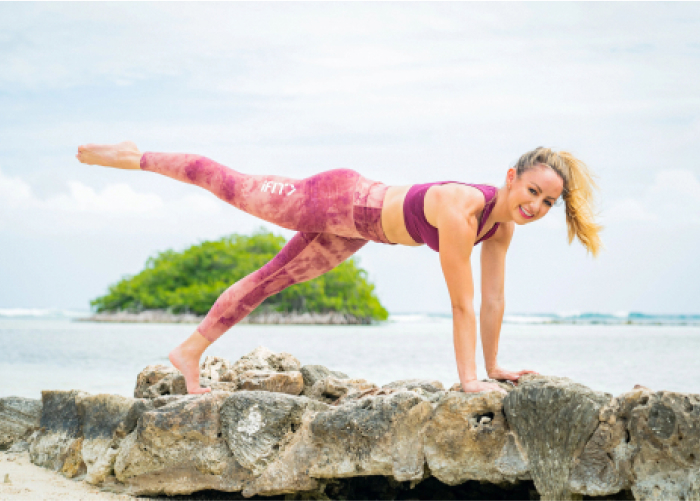
It’s important to note that this research doesn’t show that Pilates cures low back pain. However, it shows that it may be an effective tool to add to your pain-relieving regimen (given your doctor’s thumb’s up).
3. Increased Flexibility
The combination of controlled and dynamic movements in Pilates may enhance and increase flexibility.
Researchers used a randomized, single-blind control study on forty healthy men and women. [6]
Twenty study participants were randomly split into a Pilates-based training group versus 20 who went into the control group. [6]
Over eight weeks, the Pilates group practiced this training style for 45 minutes twice per week.
Researchers discovered that the Pilates group significantly improved their flexibility, according to the published study.
At four-week and eight-week check-ins, 65% and 85% of the Pilates group, respectively, passed their lumbo-pelvic stability test, which is a measure of the deep core and low back stabilization muscles. [6]
Meanwhile, the control group failed to pass their test each time. [6]
Scientists concluded that Pilates could be used as an effective add-on training program to improve on an existing one. [6]
Now, you may be wondering why you need to improve flexibility and, according to an article from Harvard Health on the benefits of flexibility training, “Activities that lengthen and stretch muscles can help you prevent injuries, back pain, and balance problems.” [7]
Seeing that shows it may be a good idea to weave in some flexibility training, including from Pilates, into your weekly workouts.
We’ll show you how to do that shortly, but first, there’s one more health benefit of Pilates to cover.
4. Better Posture
Another body of research looked at whether or not Pilates had any effect on posture.
This time, scientists looked at 36 middle-aged women and divided 20 of them into the Pilates group and 16 into a control group. [8]
The Pilates group went on to practice it three times per week for 12 weeks.
After that time had passed, they found that the control group showed no statistical differences before and after the study. [8]
On the other hand, the Pilates group experienced statistically significant differences, including increases in height and decreases in body fat, according to the study. [8]
Now, it’s not that study participants grew a few inches. Instead, Pilates helped improve their posture and overall alignment, which is another positive benefit of the practice.
By targeting the muscles responsible for proper alignment, Pilates may help correct poor posture habits, leading to a more upright and confident stance.
One big question that often comes up when talking about the health benefits of Pilates is:
Can You Lose Weight Doing Pilates at Home?
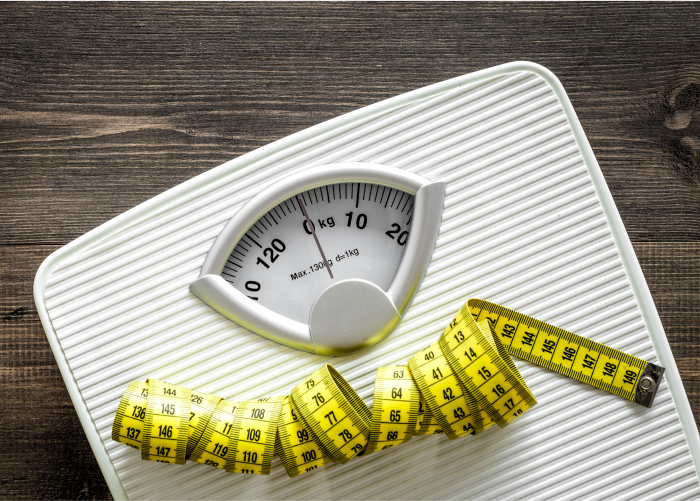
And is Pilates good for weight loss?
While Pilates is not primarily used as a weight-loss tool, it may be able to contribute to weight loss [8] when combined with a balanced diet and other forms of exercise, such as cardio and strength training. There’s unfortunately not enough research to conclusively support this finding just yet.
On its own, and without a change in diet or additional exercise, the limited studies cannot say that it can lead to weight loss.
Does it mean you shouldn’t use Pilates in your weight loss toolkit?
Nope!
But it’s not a magic wand solution that will solve your weight loss woes, which is important to remember.
The next question that often comes up is:
How Long Does It Take to See Results from Doing Pilates at Home?
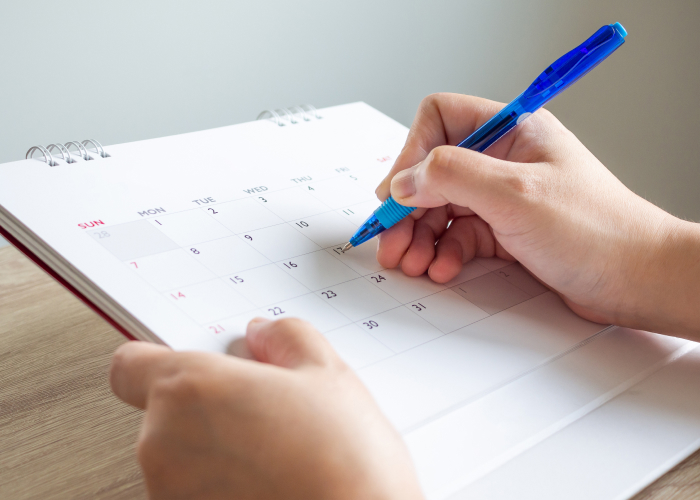
As with any other forms of exercise, that answer depends on a few individual factors, including how often you practice it, the intensity of your practice, your current fitness level, what your diet and caloric consumption look like, your age, how active you are throughout your day, and if you do any other forms of exercise, such as strength training or cardio.
Based on the studies we shared in this article, consistent practice (2-3 times per week) may increase your flexibility, improve your posture, and enhance your core strength after practicing Pilates consistently for eight to 12 weeks.
But again, individual results may vary, and since the studies are so small, it’s impossible to draw firm conclusions.
Another big question that comes up about Pilates is:
Is Pilates Effective at Home?
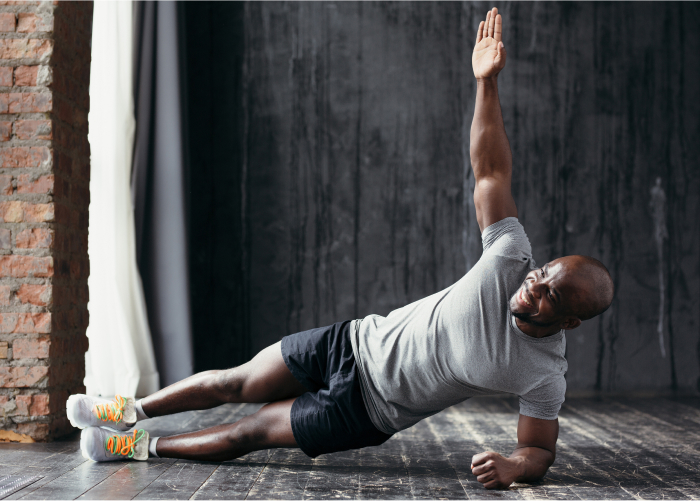
It absolutely can be!
Many of the studies shared in this article involved doing Pilates on a mat versus going to an expensive studio since most people in the studies simply don’t have access to places like that.
With proper guidance and consistent commitment, you may be able to achieve the same benefits as you would in a studio setting.
Pilates is also a great at-home workout since it can be done with minimal space and equipment.
All you need is a mat and your body weight to get started.
Adding resistance bands, standalone cables for your arms, and tools like Pilates rings can up the resistance and challenge, but they’re not necessary for a good Pilates workout.
As long as you focus on proper form and alignment, you may be able to maximize the effectiveness of your at-home Pilates sessions.
Is 20 Minutes of Pilates a Day Enough?
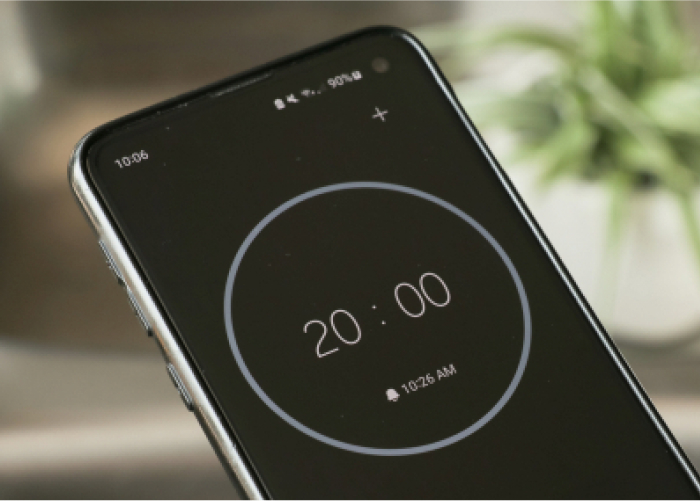
The answer to that question depends on the results you’re hoping to achieve.
Twenty minutes of Pilates a day may be beneficial, especially for beginners, if you’re going from no movement to some movement.
But, depending on where you are, it may not be enough to lose weight on its own.
As with any exercise, consistency is key in Pilates, and even a short daily practice may yield some noticeable improvements over time.
As you progress, consider extending your sessions or adding additional resistance or even more workouts to challenge yourself further.
That consistent progression over time may help you see improvements.
3 Reasons to Practice Pilates at Home

One of Pilates’s biggest downsides and drawbacks is that it can be an expensive form of exercise.
In-person studios are often pricey and may cost upwards of $1,000 per month for individual trainer sessions or around $500 per month for group classes. [9]
If you’re wondering how to do Pilates cheaply? At home may be the way to go.
Practicing Pilates at home comes with these three great benefits:
1. It’s cost-effective. Since in-person Pilates classes can be expensive, you can save money by practicing at home and eliminating costly studio fees.
2. It’s convenient. There’s no need to commute to a studio that may not be nearby or struggle to find a time that works with your schedule.
Practicing it at home lets you fit Pilates into your day whenever it suits you best.
3. It offers more privacy. If you’re uncomfortable practicing in an in-person Pilates studio, exercising at home, especially when you’re just starting, may be better suited.
Speaking of that…
How to Practice Pilates at Home

iFIT, a paid subscription service, offers Pilates classes designed for all levels, and each one can be done right from the comfort of your home.
Here are some of our recommended series to try to kickstart your at-home Pilates journey:
- Bahamas Intro to Pilates Series (start here if you’re new to Pilates)
- Antigua Restorative Pilates Series
- Precision Strength and Pilates Series (this one is a bit more advanced than the first two)
- Aruba Pilates Sculpting Series (this one is also more advanced than the first two)
The bottom line
Consistently practicing Pilates may help to improve your balance and lower limb strength, decrease lower back pain, increase your flexibility, and improve your posture.
However, as you saw in this article, more research is needed to confirm these findings.
Until then, as long as you have your doctor’s clearance, you can try Pilates at home to see if you’ll enjoy it.
Add it to your weekly workout routine and in between your cardio and strength training days, and you may find it’s the perfect addition.
You can also try the iFIT Pilates programs we mentioned a moment ago. If you do, be sure to let us know how it goes. We’d love to hear about it.
References
- https://www.ncbi.nlm.nih.gov/pmc/articles/PMC3666467/
- https://www.frontiersin.org/articles/10.3389/fneur.2021.724218/full
- https://journals.lww.com/ajpmr/FullText/2018/06000/Effects_of_Mat_Pilates_on_Physical_Functional.6.aspx
- https://www.sciencedirect.com/science/article/abs/pii/S0091743515000730
- https://journals.plos.org/plosone/article?id=10.1371/journal.pone.0100402
- https://www.ncbi.nlm.nih.gov/pmc/articles/PMC3289190/#:~:text=Results,period%20(P%3C0.001)
- https://www.health.harvard.edu/staying-healthy/benefits-of-flexibility-exercises
- https://www.google.com/url?q=https://www.ncbi.nlm.nih.gov/pmc/articles/PMC4932037/&sa=D&source=docs&ust=1691765841143678&usg=AOvVaw3OV4T2GYUEfmxiqmLojqXL
- https://pilatesmovesyou.com/how-much-should-a-pilates-class-cost/
Disclaimer: This blog post is not intended to replace the advice of a medical professional. The above information should not be used to diagnose, treat, or prevent any disease or medical condition. Please consult your doctor before making any changes to your diet, sleep methods, daily activity, or fitness routine. iFIT assumes no responsibility for any personal injury or damage sustained by any recommendations, opinions, or advice given in this article. Always follow the safety precautions included in the owner’s manual of your fitness equipment.


